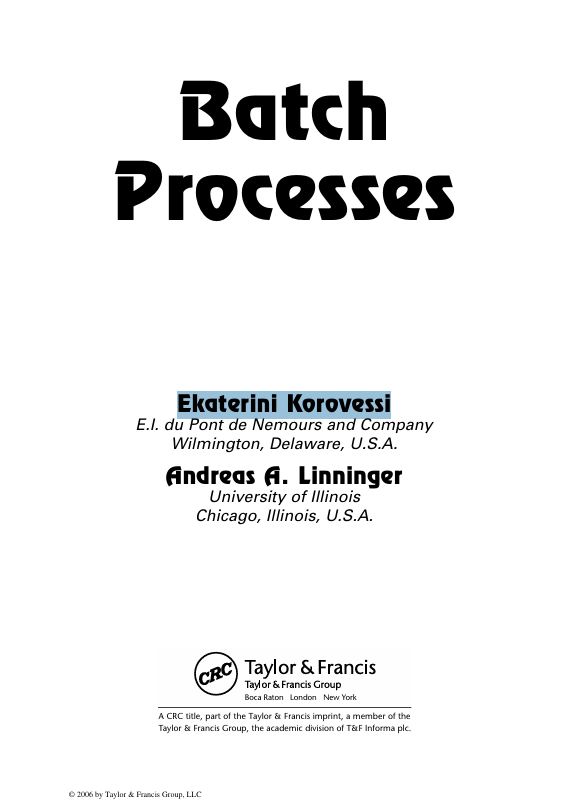The inherent dynamic nature of batch processes allows for their ability to handle variations in feedstock and product specifications and provides the flexibility required for multiproduct or multipurpose facilities. They are thus best suited for the manufacture of low-volume, high-value products, such as specialty chemicals, pharmaceuticals, agricultural, food, and consumer products, and most recently for the constantly growing spectrum of biotechnology-enabled products. This book presents the latest batch processing technologies, how they are currently being implemented, and discusses advantages, limitations, and potential future improvements. The book is divided into three sections. Part I presents an overview of the batch processing industries. The unsteady nature and flexibility of batch pro cesses, which make them so attractive, pose challenging design and operation problems. Process and equipment design issues in batch processing are covered in Part II, and Part III deals with the management of batch process operations. A description of the structure and contents of the book is included in this chapter. Chapter 2 begins with an introductory discussion of the distinct character istics of batch processes and batch dynamics and proceeds with a review of the industries that use predominantly batch processing. The subsequent discussion of the various stages of the lifetime of a drug, from conception through manufacturing, focuses on the interactions between the parallel tracks of product development and batch process development and the challenges of their optimization under the constraints of the Food and Drug Administration (FDA) regulatory approval pro cess. Use of the Merrifield process for solid-phase peptide synthesis is presented as a case study that is discussed in some detail and is used to introduce the use of various batch unit operations and demonstrate the flexibility of batch processing. The diversity of the specialty chemicals industries is exemplified in the section of the chapter that introduces specific equipment, critical variables, varying quality specifications, and operational practices for the high-purity chemicals and cosmetics industrial sectors. Selected examples of the use of batch processing in the food industry are presented in the last section of Chapter 2.




